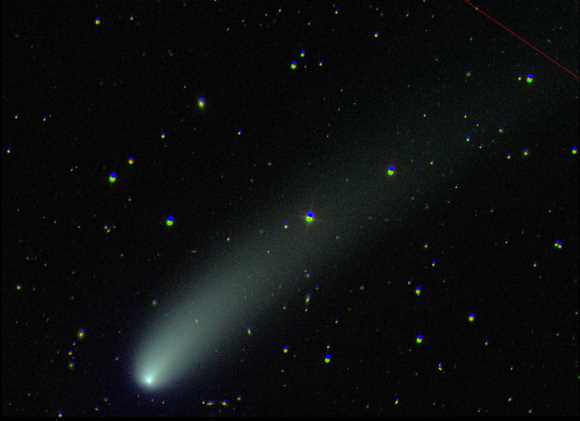For centuries, comets have captivated humanity's imagination, serving as harbingers of doom, inspiring countless artists, and fascinating astronomers. These icy remnants of our Solar System's formation hold secrets that help us understand events nearly 5 billion years ago. However, before these secrets can be unraveled, comets must first be located and studied. Recently, a team of dedicated researchers has developed a novel technique for identifying comets through the examination of data from meteor showers, assessing their potential threats to Earth.
The Nature of Comets
Comets are celestial bodies that orbit the Sun, similar to planets, yet their orbits are usually much more elliptical. Comets are primarily composed of water ice, dust, and various gases, which is why they are often referred to as "dirty snowballs." Many comets are believed to originate from two primary regions of the Solar System: the Oort Cloud and the Kuiper Belt. These distant areas are home to numerous icy bodies. Occasionally, interactions between these bodies can lead to chunks being propelled toward the inner Solar System, where they transform into the comets we recognize today.

Driven by solar heat, the ice in a comet sublimates into gas, creating a familiar fuzzy coma and often a tail. It's a common misconception that a comet's tail trails behind it as it proceeds through space; in reality, the tail always points away from the Sun, pushed in that direction by the solar wind.
Types of Comets
Comets are classified into two main categories:
- Short-period comets: These have an orbital period of less than 200 years and often originate from the Kuiper Belt.
- Long-period comets: These comets have an orbital period of over 200 years, possibly originating from the Oort Cloud.
While the risk of a long-period comet being on a collision course with Earth remains infinitesimally small, the consequences of such an impact could be devastating for life on our planet. Astronomers remain concerned about the potential for these comets to go unnoticed until it is too late.
Recent Developments in Comet Detection
A team of astronomers led by Samantha Hemmelgarn from Northern Arizona University has recently published a paper in the Planetary Science Journal, outlining their innovative approach to identifying potential impact threats from long-period comets by utilizing data obtained from meteor showers.
Meteor showers occur when Earth passes through the debris left behind by a comet's previous passage. The researchers studied 17 meteor showers associated with long-period comets, allowing them to calculate where the parent comet should be located in space.
This groundbreaking model accurately predicted the locations, direction, and speed of the comets involved, enabling astronomers to concentrate their search efforts on the most likely skies for long-period comets instead of relying on automated surveys that search the entire sky.

Model Benefits and Future Implications
This research represents a significant advancement in our ability to safeguard Earth from potential comet-related disasters. When astronomers can detect a comet on a collision course with Earth early, it provides ample time to devise a defense plan, which is crucial for mitigating risks.
As noted by Hemmelgarn, “This research gets us closer to defending Earth because it gives us a model to guide searches for these potentially hazardous objects.” While there are currently no imminent threats, the hope is that this work will aid in providing humanity with early warnings of prospective impacts in the far future.
For more information, you can refer to the following sources:
- Universe Today - Meteor Showers May One Day Help Protect Humanity!
- How to Find a Comet Before it Hits Earth
Conclusion
In summary, the development of new methodologies for detecting long-period comets using meteor shower data enhances our capability to address potential cosmic threats. As technology progresses, these advancements may play a pivotal role in safeguarding humanity from catastrophic impacts while enriching our understanding of these fascinating celestial objects.




